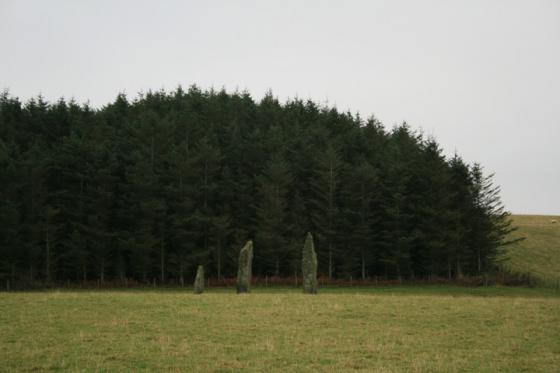








The Paps of Jura beyond



I can’t think of much to say about this stone. It’s definitely not difficult to find, and being about 2 feet from the road, it’s very accessible. I got the feeling that it’s placement had to be something to do with this spot being at the narrowest point of the island, but can’t quite explain why.
The one thing I feel I can say is this is a much nicer stone than the one at the south of the island at Cathan’s Church. Shame it’s been a bit broken, but it does make it a nice shape.
Visited August 2006
Since the Bronze Age or earlier, Carragh an Tairbeirt standing stone has marked the narrowest point of Gigha, tall enough to be seen from the sea from both east and west. The name might be familiar – there are several places named Tarbert (An Tairbeart or Tairbeirt in Gaelic) across Scotland, on narrow necks of land where boats could be drawn or carried from water to water. The stone marks this isthmus, but it’s likely to have had deeper meaning. Was its placement linked to cycles of the Moon or to the midsummer sunset?
Local legend knows it as the Giant’s Tooth, pulled and thrown by a giant with toothache. It’s also known as the Hanging Stone, where people convicted at nearby Cnoc an Eireachdais – the Hill of the Assembly – were hanged from the cleft at the top. Or perhaps you prefer the story of betrothed couples who shook hands through the gap for luck.
From ‘Visit Gigha‘
More info about the stone, with mention of the other ancient stones of the island, including the Bodach and the Cailleach.
Some stuff about possible archaeoastronomical significance of the stone.
Description of the stone courtesy of the West of Scotland Archaeology Service.


























